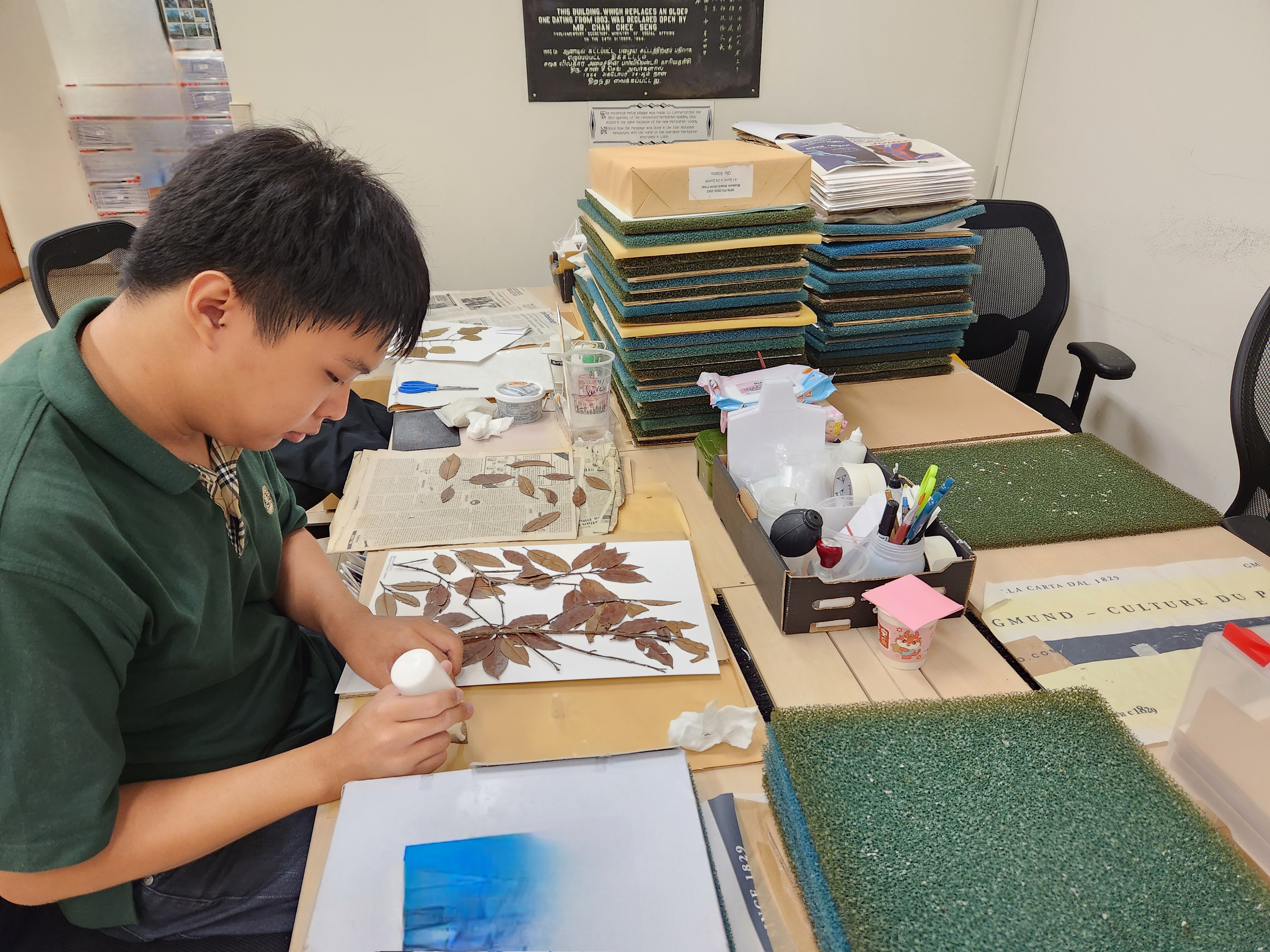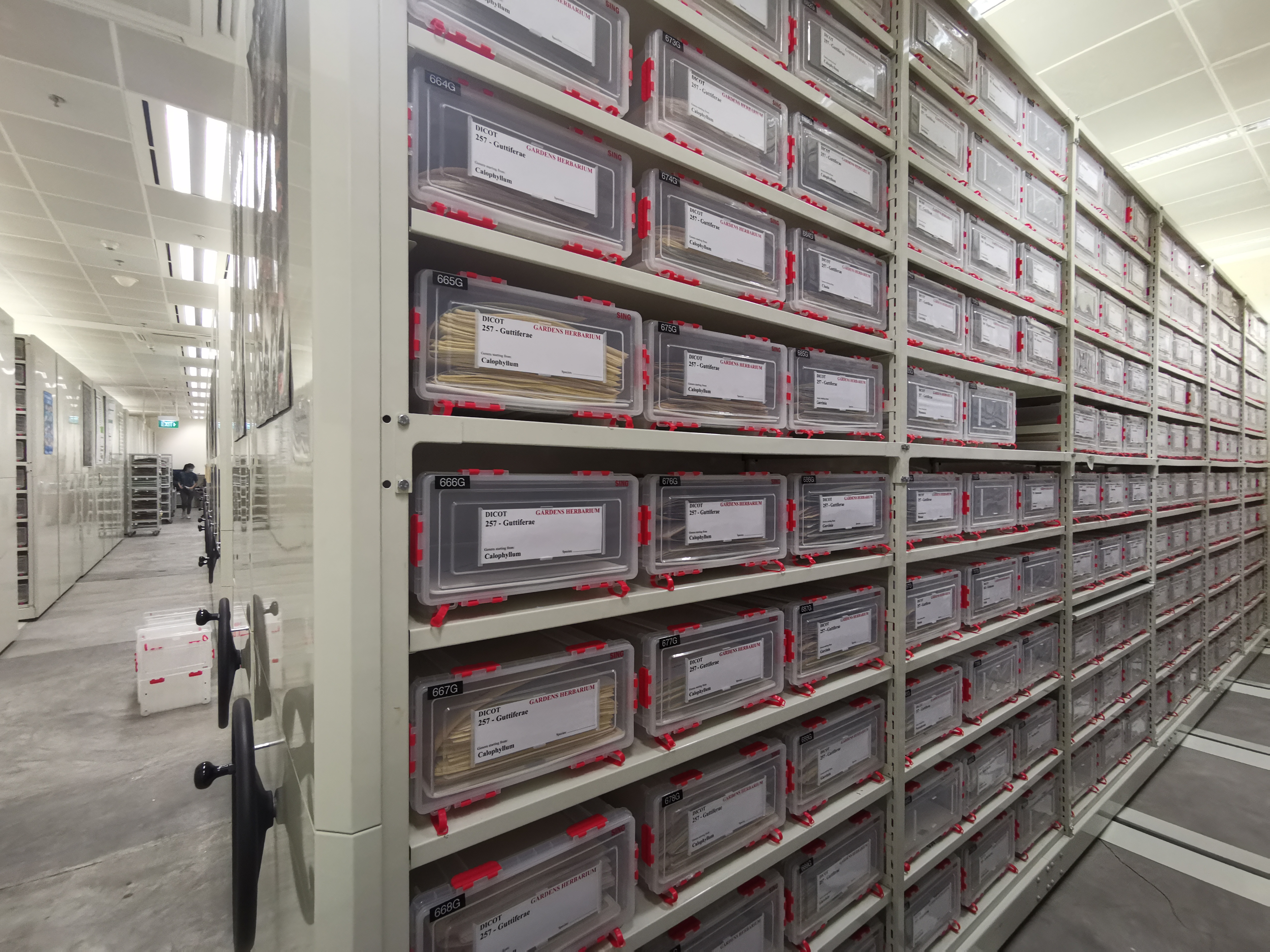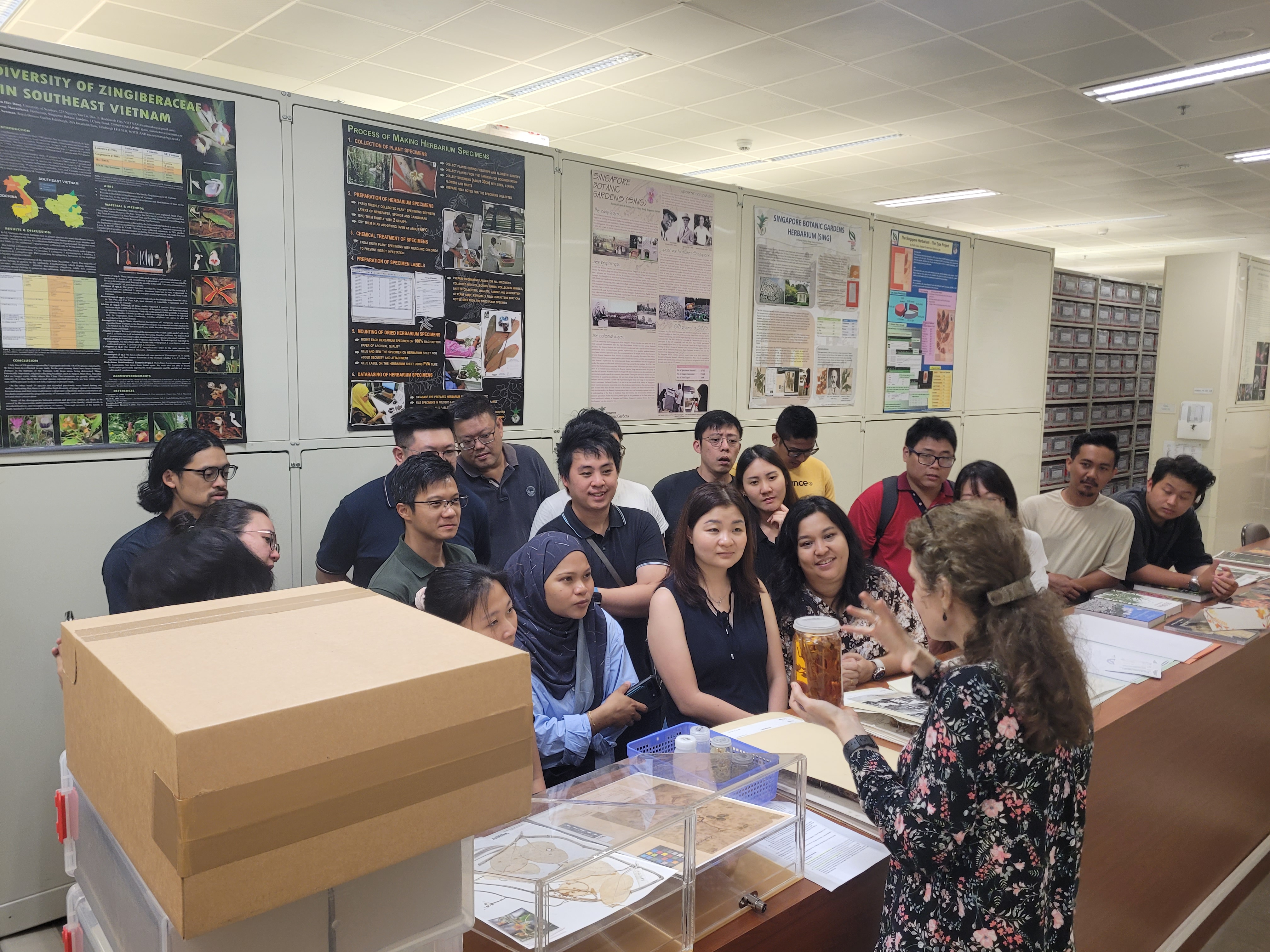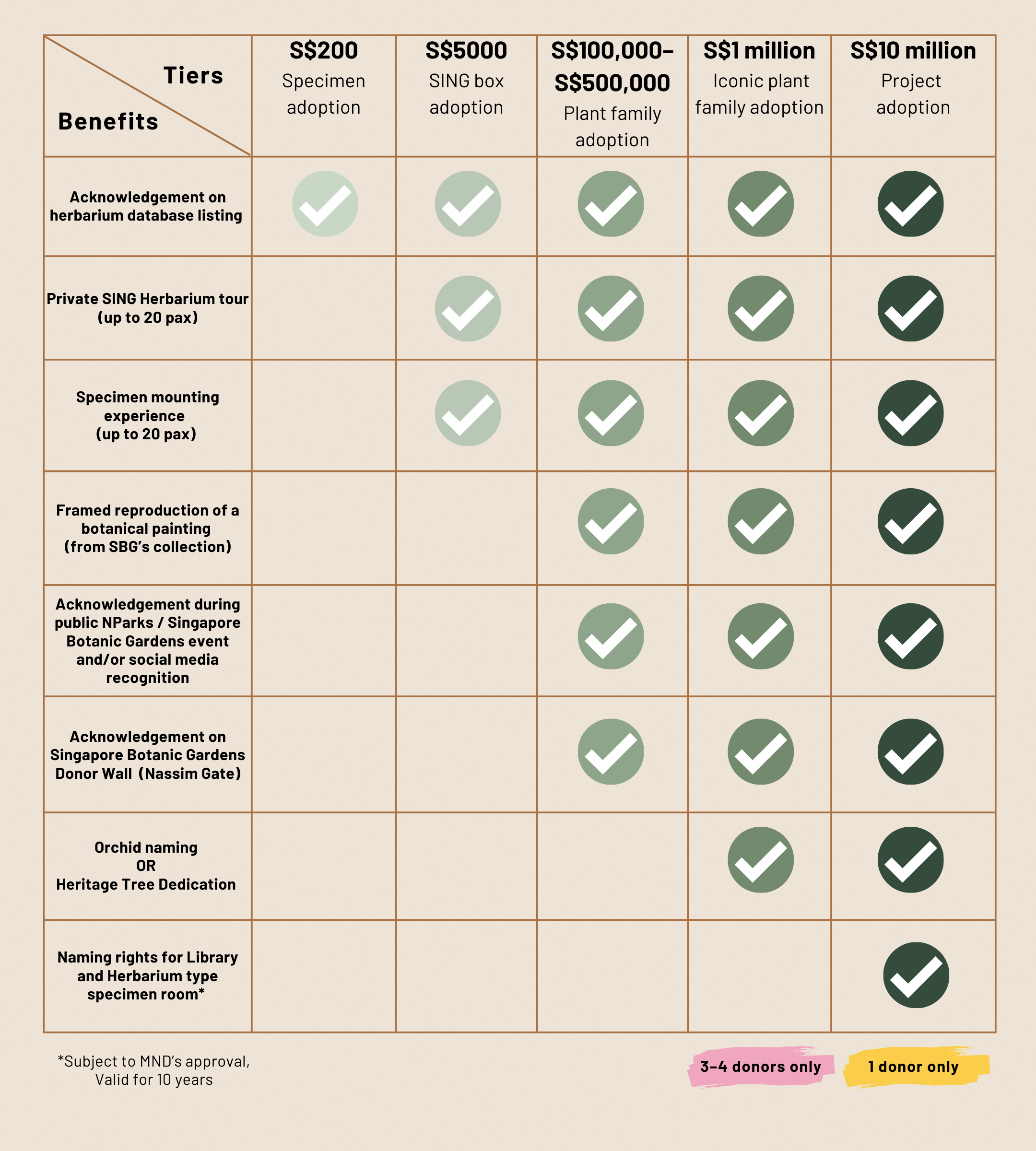Digitalisation of the Singapore Herbarium
From 2025 - 2027, the Singapore Botanic Gardens will be embarking on its plans to digitalise the Singapore Herbarium (SING), to provide online access to our botanical collections and safeguard valuable specimen data against potential loss or damage.
Why this project is important
Digitalising the Herbarium provides access to botanical collections, enabling accurate plant identification, advancing diverse research fields, and protecting valuable specimen data. Here’s why the Herbarium matters to all of us!
-
Human life is fully dependent on plants; Precise plant names are essential for accurate communication, effective use and conservation.
-
Herbaria are the guardians of specimens on which plant names are based around the world; SING is a key herbarium in our region, housing amazing collections of specimens gathered across Southeast Asia for over 230 years.
-
The data derived from digitised specimens and their associated labels provide basis for future research, including studies on climate change and wild crop relatives, both of which are crucial to our future survival, impacting food security as well as the ecological and other services plants provide to humans.
-
Dead plants can still “communicate” – For example, genetic information can be extracted from their DNA – even from extinct species collected hundreds of years ago!

Figure 1: Mounting of specimens
What digitalisation of the Herbarium achieves:
-
Seamless plant data management:
-
High-resolution digital images and detailed metadata allow researchers to examine specimens more effectively.
-
Supports research in biodiversity conservation, species discovery, species distribution, phenology (flowering and fruiting patterns), plant adaptation to climate change, and crop wild relatives for food security.
-
-
Enhanced research capabilities:
-
Digital records allow better storage, organisation, and retrieval of pictorial and textual plant data.
-
Enhanced data analytics of AI pattern recognition improves and automates species identification and taxonomic classification
-
-
Global research equity and accessibility:
-
A digitalised herbarium is easily accessible to researchers, students and even the general public.
-
Globally democratises access to valuable botanical resources.
-
-
Protection of valuable botanical information:
-
Safeguards valuable botanical data by providing a backup of the information.

-
Figure 2: Behind the scenes - Inside the Herbarium!
What is a Herbarium?
A herbarium is a specialised research facility that houses a curated collection of preserved plant and fungi specimens. Amassed over a long period of time from many different places, this ever-growing collection provides a snapshot of a species’ presence at a specific time and location.
Established in 1875 by Henry James Murton, the first Superintendent of the Singapore Botanic Gardens, the Singapore Herbarium (SING) has since evolved from a small office collection to the second-largest herbarium in Southeast Asia, with approximately 800,000 specimens of plant and fungi. Its invaluable collections played a key role in securing the UNESCO World Heritage status for the Gardens in 2015.

Figure 3: Tour of the Herbarium
How to Donate:
-
Giving.sg (link will be updated in mid-April 2025)
-
Bank Transfer (please email garden_city_fund@nparks.gov.sg for details)
-
Cheque
For cheque donations, mail the cheque, payable to Garden City Fund, with your full name/company name, NRIC/FIN/UEN and “herbarium digitalisation” at the back of the cheque, to:
Garden City Fund
c/o National Parks Board HQ
1 Cluny Road
Singapore 259569
Donor Benefits:

What it takes to digitalise a herbarium and how my donation helps
Digitalising a herbarium is a complex process. Your donation will go towards bringing in technology that will enable the Singapore Herbarium to be fully digitalised by 2027. You will also be supporting research and conservation work undertaken by the Singapore Botanic Gardens and other researchers who use the Singapore Herbarium (SING) as an invaluable resource of botany information.
-
Each of the approximately 800,000 physical plant and fungi specimens has to be photographed or scanned in ultra-high definition.
-
Accompanying the digital copy of each specimen is a set of metadata, including the scientific name, collection date, location and collector of the specimen.
-
To support the digitised specimens, a data management system is developed to store and manage the vast collection. This enables the plant data to be categorised, arranged and easily searched.
-
The collection has to be updated continuously when new specimens are collected or new information is obtained.
You can observe the digitisation process through a live viewing gallery later this year, offering a rare behind-the-scenes look at this meticulous work. Stay tuned for more details!

